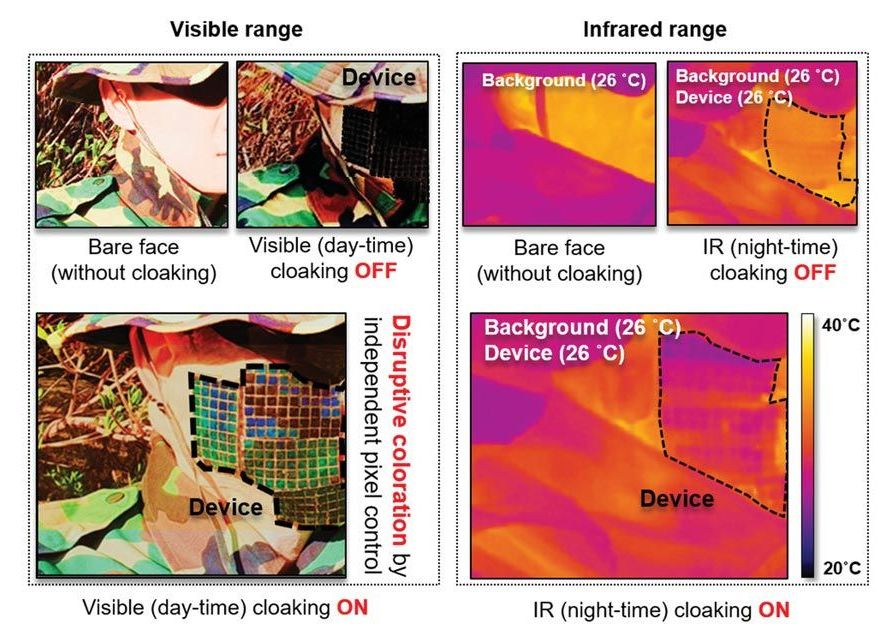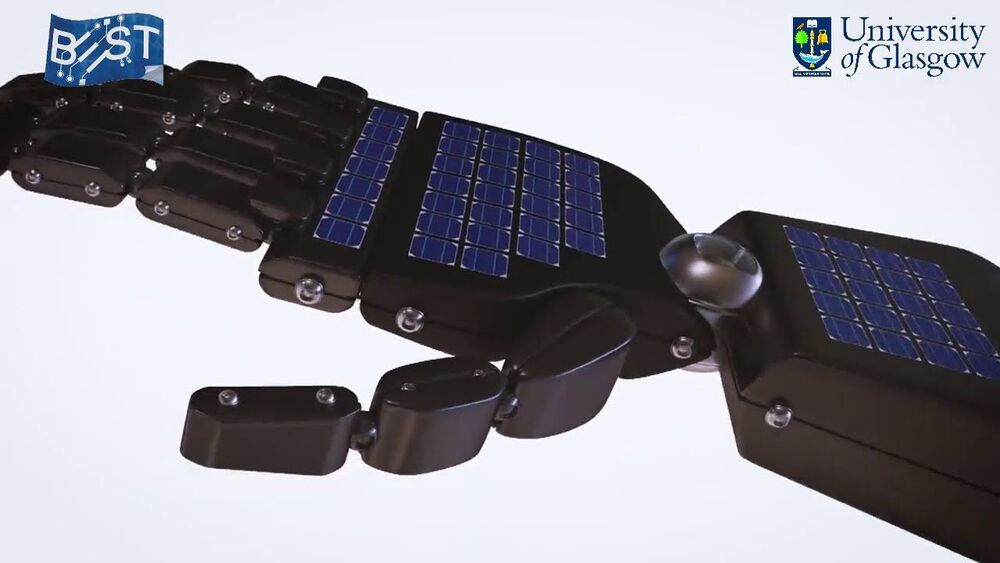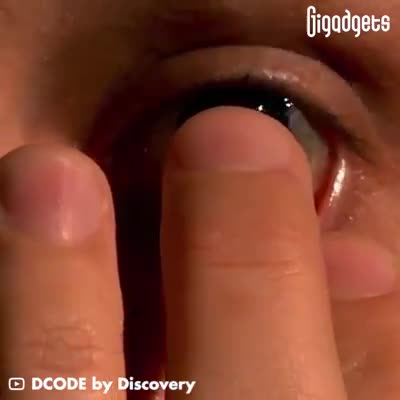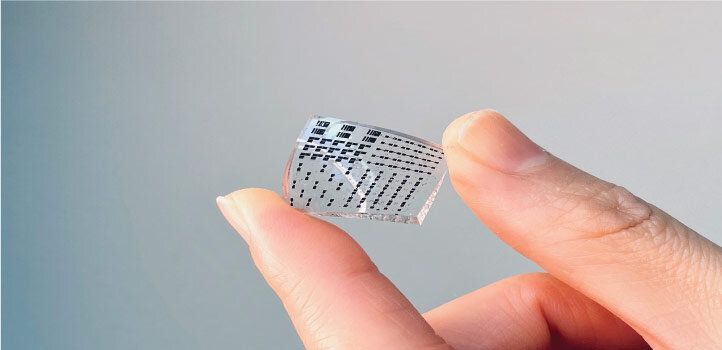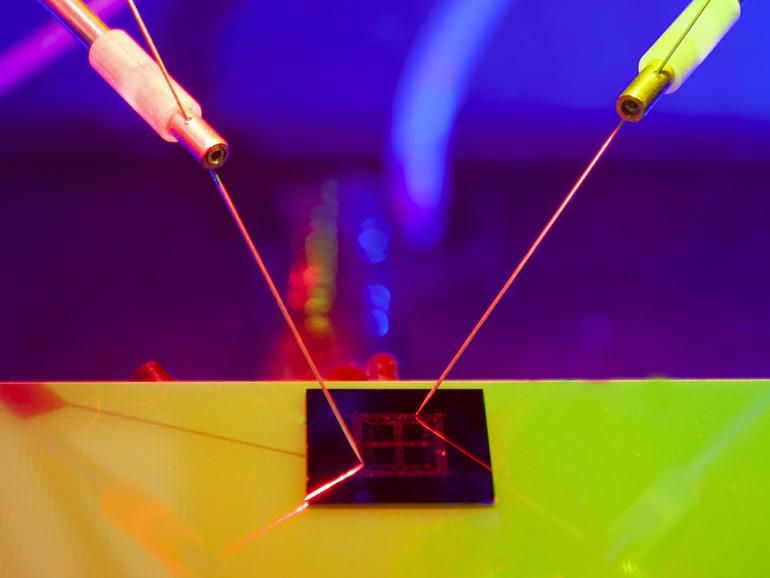Scientists from around the world are developing robotic skin that helps machines gain the sense of touch. It’s estimated that robots will displace 20 million human workers by 2030.
Category: cyborgs
Thermally controlled, active imperceptible artificial skin in visible-to-infrared range.
Cephalopods’ exceptional ability to hide into any background has inspired researchers to replicate their fascinating ability to camouflage in the infrared (IR) and visible spectrum. Recent advances offered a number of physical mechanisms to reproduce the cloaking functionalities of cephalopods. However, most of works focused on either camouflaging in the visible or IR camouflage range only: not dual modes in a single device structure that can readily switch between the visible and IR mode according to a suitable situation.
Recently, Prof. Seung hwan Ko’s group in Seoul National University in Republic of Korea demonstrated the visible-to-IR active ands camouflage skin that provides an on-demand cloaking platform both in daylight and at night with a single input variable: Temperature (T). The soft thermoelectric device that is capable of active cooling and heating serves as a backbone structure to fine-tune the surface of each pixel and thereby enables thermal camouflage in the IR range by matching the ambient temperature. The Ko’s group further extended the camouflage range to the IR-to-visible spectrum by incorporating thermochromic liquid crystal at the surface that changes light reflectance ® based on the device temperature, enabling the expressing a variety of colors by controling temperature. The camouflage system as a whole encompasses the two independent spectrums into a ‘full spectrum’ with a single soft structure by controlling temperature.
A new type of energy-generating synthetic skin could create more affordable prosthetic limbs and robots capable of mimicking the sense of touch, scientists say.
In an early-view paper published in the journal IEEE Transactions on Robotics, researchers from the University of Glasgow describe how a robotic hand wrapped in their flexible solar skin is capable of interacting with objects without using dedicated and expensive touch sensors.
Instead, the skin puts the array of miniaturized solar cells integrated on its soft polymer surface to a clever dual use. The cells generate enough energy to power the micro-actuators which control the hand’s movements, but they also provide the hand with its unique sense of ‘touch’ by measuring the variations in the solar cells’ output.
Henrik shows off his bionic arm! 😃
Henrik shows how he performs everyday tasks with a bionic arm 😮 🦾.
Finger prosthetics We really are living in the future, wow GIFs | Search for More wow GIFs on www.GIF-VIF.com.
A material that mimics human skin in strength, stretchability and sensitivity could be used to collect biological data in real time. Electronic skin, or e-skin, may play an important role in next-generation prosthetics, personalized medicine, soft robotics and artificial intelligence.
“The ideal e-skin will mimic the many natural functions of human skin, such as sensing temperature and touch, accurately and in real time,” says KAUST postdoc Yichen Cai. However, making suitably flexible electronics that can perform such delicate tasks while also enduring the bumps and scrapes of everyday life is challenging, and each material involved must be carefully engineered.
Most e-skins are made by layering an active nanomaterial (the sensor) on a stretchy surface that attaches to human skin. However, the connection between these layers is often too weak, which reduces the durability and sensitivity of the material; alternatively, if it is too strong, flexibility becomes limited, making it more likely to crack and break the circuit.
Ira Pastor, ideaXme life sciences ambassador interviews Dr. Hugh Herr, Associate Professor MIT Media Lab and head of the Biomechatronics group, @MIT Media Lab.
Ira Pastor comments:
Dr. Hugh Herr, is Associate Professor MIT Media Lab, heads the Biomechatronics group at the MIT Media Lab, as well as the Center for Extreme Bionics at MIT, and is creating bionic limbs that emulate the function of natural limbs.
In 2011, TIME magazine coined him the “Leader of the Bionic Age” because of his revolutionary work in the emerging field of biomechatronics – technology that marries human physiology with electromechanics.
A double amputee himself, Dr Herr is responsible for breakthrough advances in bionic limbs that provide greater mobility and new hope to those with physical disabilities. He is the author and co-author of more than 150 peer-reviewed papers and patents, chronicling the science and technology behind his many innovations. These publications span the scientific fields of biomechanics and biological motion control, as well as the technological innovations of human rehabilitation and augmentation technologies.
Dr. Herr’s Biomechatronics group has developed gait-adaptive knee prostheses for transfemoral amputees and variable impedance ankle-foot orthoses for patients suffering from drop foot, a gait pathology caused by stroke, cerebral palsy, and multiple sclerosis. He has also designed his own bionic limbs, the world’s first bionic lower leg called the BiOM Ankle System.
The chip could potentially be used to power drones, robotics, smart watches, and bionic implants.


